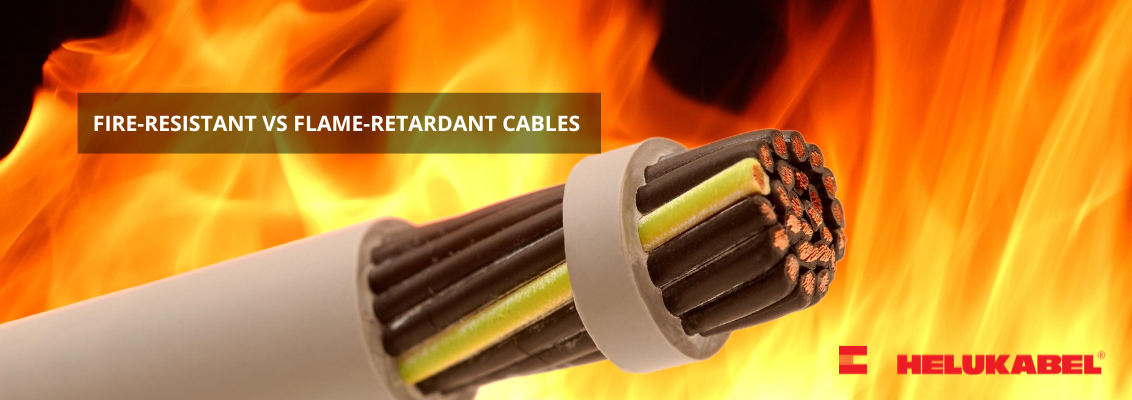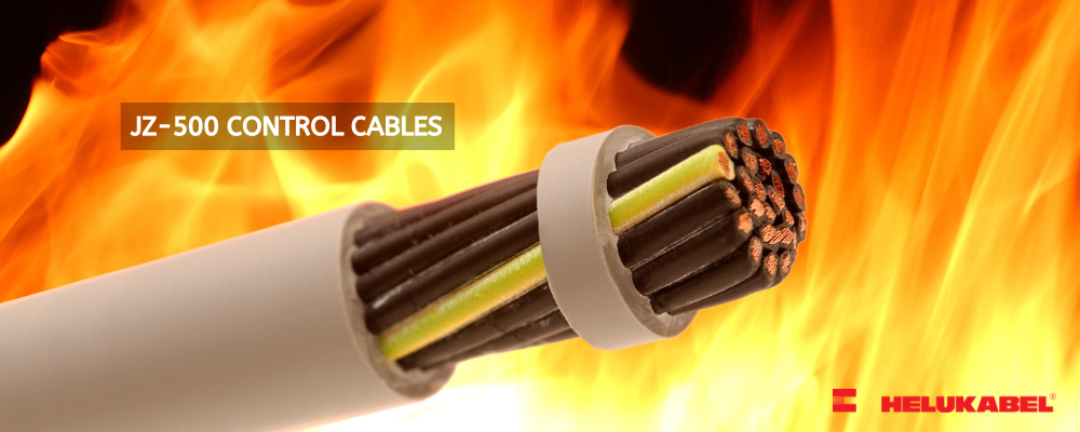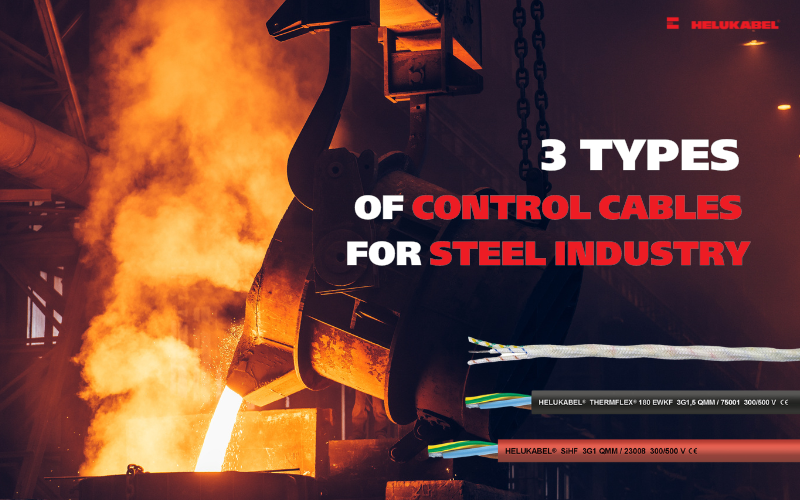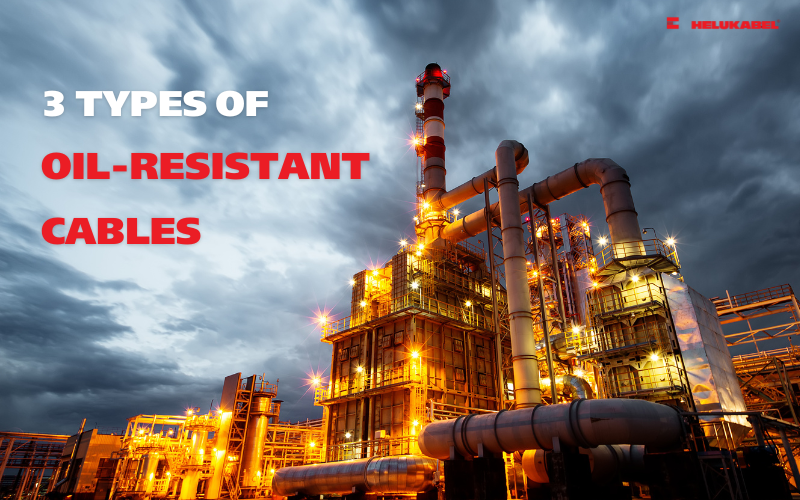WHAT IS THE DIFFERENCE BETWEEN FIRE-RESISTANT AND FLAME-RETARDANT CONTROL CABLES?

According to the press release on the fire and explosion situation in the first six months of 2022 from the Vietnam Fire and Rescue Police Department, in Vietnam, the preliminary estimate of assets in cash is about 414.73 billion VND. In particular, the causes of 545/848 cases, there were 398 cases (accounting for 46.93%) due to malfunctions of electrical systems and equipment. From this data, the incident of electrical systems and equipment is one of the causes of loss of life and property. If the selection of wires, cables, and accessories or the installation and use process is not suitable, this will lead to unfortunate consequences and cause big losses.
Currently, some of the main causes of fire and explosion in the electrical system include fire due to short circuits, fire due to open and loose wiring, and fire caused by using poor quality wires.
Fire due to short circuit
A short circuit is a phenomenon where the phase wires short together, or the phase wire touches the ground causing the conductor resistance to increase, and the temperature rises suddenly, leading to burning the insulation of the conductor, generating sparks, and causing equipment fires electricity. The installation of electrical wires at the wrong distance or poor insulation are also the causes of short circuits in the system.
Fire due to open, loose wire connection
In the process of improper wiring, it will make the junction hot and cause fire and explosion. When the connection is loose or open, it will lead to the phenomenon of sparking, which is easy to cause fire and dangerous to people around.
Fire due to use of poor quality power cord
Fire and explosion incidents in the electrical system often occur when the selection of wire, cable, or accessory products is not of good quality and the electrical load capacity, heat resistance, and insulation of the wire are not guaranteed. Especially, for crowded areas such as commercial centers, manufacturing plants, and factories, to limit fire and explosion incidents, the choice of fireproof and fire retardant electrical cables is one of the effective solutions and safety.
What is the difference between fire-resistant and flame-retardant control cables?
Fire-resistant cables
Fire-resistant cables help maintain power and signal transmission depending on certain conditions. For example, at a temperature of 750 degrees Celsius for 90 minutes, the cable can still maintain power transmission.
Some fire-resistant cables that you can refer to are: HELUTHERM® FR BS 7629, (N)HXH-FE 180/E 30, and (N)HXCH-FE 180/E 90. In addition, some types of fire-resistant cables also have an illustration with aluminum foil or steel armor when necessary.
| Standard | Temperature conditions and some other conditions | Time conditions |
| IEC 60331 standard | 750°C | 90 minutes |
| BS 6387 (A) standard | 650°C | 180 minutes |
| BS 6387 (B) standard | 750°C | 180 minutes |
| BS 6387 (C) standard | 950 độ C | 180 minutes |
| BS 6387 (W) standard | 650°C and has the effect of water | 15 minutes |
| BS 6387 (X) standard | 650°C and has the effect of shock, vibration | 15 minutes |
| BS 6387 (Y) standard | 750°C and has the effect of shock, vibration | 15 minutes |
| BS 6387 (Z) standard | 950°C and has the effect of shock, vibration | 15 minutes |

There are two basic types of fire-resistant cables:
| Components | Standard | Special |
| Conductor | Cu | Cu |
| Sheathed fire-resistant | Mica tape | Silicone Rubber Mix |
| Insulation | XLPE | Silicone Rubber Mix |
| Outer sheath | LSHF | LSHF |
| Abbreviation structure | Cu/Mica/XLPE/LSHF | Cu/Silicone Rubber mix/LSHF |
Flame retardant cable
Flame retardant cables only allow flame propagation at certain distances. For example, when a fire occurs, the wire will limit the spread of the flame to a distance of no more than 5 meters. Each type of fire-resistant and flame-retardant cable will have different standards. Some common standards for flame retardant cables are shown in the following table.
| Standard | Cable structure | Time conditions |
| IEC 60332-3-22 (A) standard | Cable sheaths made of non-metallic material equivalent to 7l/m are folded in bundles | 40 minutes |
| IEC 60332-3-23 (B) standard | Cable sheaths made of non-metallic material equivalent to 3.5l/m are folded in bundles | 40 minutes |
| IEC 60332-3-24 (C) standard | Cable sheaths made of non-metallic material equivalent to 1.5l/m are folded in bundles | 40 minutes |
In conclusion, fire-resistant and flame retardant cables have different advantages and applications. Therefore, depending on the needs and purposes of use, you can make appropriate choices. Fire-resistant and flame retardant cables usually ensure a high level of safety, limit fire and explosion incidents, and minimize damage to people and property. At HELUKABEL, we offer a wide range of fire-resistant and flame retardant cable products, suitable for a wide range of industrial applications. If you need to find out more about product information or are looking for electrical connection solutions for your project, please contact our specialized engineers for advice and support for optimal solutions.
>>See more: Flame-retardant cables from HELUKABEL




